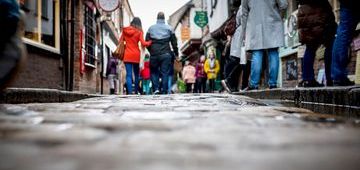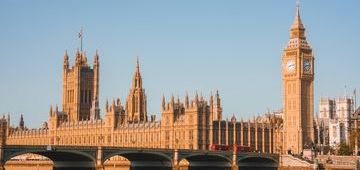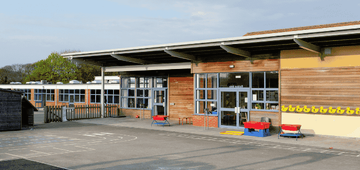Can you tell us about your current role and where you work?
I’m a professor at the Wright Institute in Berkeley, California. I’ve taught a variety of classes, focusing on research, the history of psychology, neuropsychological screening, psychopathology, biological bases of behavior and statistics. I also run a small research group where all our studies focus on health disparities.
What is your favourite part of your role?
I didn’t start out life with a keen interest in research or the sciences. I love the arts and might have become a children’s book illustrator, as I believe that conveying a sense of wonder to children is extremely important. Even though my students are adults, when they tell me they’ve developed a passion for something because of something they’ve learned from me, it’s such a wonderful feeling. It turns out that my work is about conveying wonder after all!
Another gratifying part of my role is when I make a good connection with a student and I feel like I can help see them through not only a course but through their dissertation and through to their first job. I want them to be able to look back at their graduate school years and feel like someone cared about them, that someone was rooting for them.
Can you give us an overview of your career path?
I was late going to graduate school and was a bookseller for a while. I knew that people who studied mental health would have intellectually and emotionally rich careers, so at age thirty I went to school and studied clinical psychology.
By happenstance, at a conference in my first year I met someone whose lab I would join, and whom I would work for over the next 7 years. Her specialty: neurotoxins. She had helped the Japanese think about neuropsychologist testing after the Sarin nerve gas attack in the Tokyo subway station in 1995. She was also working on neuropsychological issues seen in workers in the US who were involved in welding and had developed a kind of Parkinson’s condition with attendant neuropsychological changes. So, the next several years of my life were involved with testing and getting to see parts of America I had never been to.
I then became interested in the rising prevalence of autism and neuroatypicality in children. I wondered whether I could use mapping to see if there were clusters, by looking at the place of conception and its nearness to particular hazards, as designated by our Environmental Protection Agency. While thinking about that study, I started reading about John Snow’s work and I sometimes wonder what he would think of the mapping capabilities we have now!
Recently I’ve been studying adversity and violence. The Adverse Childhood Experiences survey (ACE survey) is widely used to look at trauma, but it focuses on adversity happening in the home. That leaves out a lot of adversity and trauma happening out in the world, such as the inability to get medical care because of the inability to pay, lack of medication, housing insecurity, food insecurity, violence on the streets, bullying at school and having to live in ecologically compromised environments. Some studies using the ACE survey show that as the amount of trauma goes up, so too do the long-term health consequences for the individual. To better understand this correlation, I redesigned the questionnaire to look at adversity both inside and outside the home, as well as some systemic issues.
The new questionnaire also has health questions. I think it’s important to ask the people themselves what they think would make them healthier and what would make their community healthier. I asked people to make two health wishlists, one for themselves and one for the community. Near the top of many people’s personal wishlist was having access to affordable healthier food, closer to home. So out of this study began the development of a recipe bank, collecting recipes that are international in flavors, inexpensive and nutritious. What people put on the health wishlist for the community were things like better schools, reduced corruption, community centers, parks and having elected officials who really represent their interests. I hope to expand this study to other countries.
I live in California, and for the last few years, we’ve seen devasting fires, as have many drier places with a Mediterranean climate. So, I am also doing studies to look at the impact of disasters on adults and children. I’m learning from the children how much the disasters have uprooted their lives and impacted their schoolwork, particularly for those children with learning differences and medical conditions. When I asked children if they had lost something in a disaster that they still miss, I will never forget the child who wrote, “myself.”
Together with one of my graduate students, Lauren Hernandez, we’re also researching pain. We’ve both been so moved by the high rates of pain medication overdoses, people using illicit or recreational drugs for pain control. We’re trying to understand people’s relationships to their medical providers, the ways they’re trying to cope and exploring whether a pain hotline can help people.
In your role, how do you support / improve the public’s health and wellbeing?
I strongly believe that when we do studies, there ought to be something that goes directly back to help people’s lives. For example, for the pain study, maybe we’ll be piloting a pain hotline. In the adversity study, it’s making both a new tool to capture a more realistic view of the amount of adversity in our lives and developing a collection of recipes, shared from one home cook to another. My study of disasters led to me writing a booklet called “Disaster Preparedness for the Western States”, which includes information specific to individuals and families where there’s a disability or medical vulnerability. There is no foreseeable way to turn back climate destabilization, so we need to do all we can to prepare people to survive the climate turbulence ahead.
What areas of public health are you the most passionate about?
I am interested in so many areas that I contacted RSPH asking if there could be focus on more areas of public health!
How did you find out about RSPH and what do you enjoy most about your membership?
I learned about RSPH because when I began studying autism and neuroatypicality, I used mapping for that study, which led me to learn more about John Snow and that led me to learn about RSPH.
When the pandemic started, I began the International Pandemic Arts Archive to collect images of the artwork people were making about the pandemic so that anyone curious about this time in our global history has a repository of art to look at. I shared what I was doing in an edition of the RSPH’s “Arts, Health and Wellbeing newsletter” for one of the RSPH’s Special Interest Groups. That was perhaps my first contact with a colleague in the organization, and those wonderfully kind emails meant a lot to me. I belong to other organizations, but none where I feel a sense of an intellectual home as I do when I read about the activities of RSPH.
What do you do to take care of your own health and wellbeing?
I am very grateful for my health. It allows me to be caring of others, to enjoy the company of the wonderful people around me, to be curious about my world, and to keep on exploring it. These are big motivations for trying to stay healthy. So, I do the usual things and try to make time to write poetry, paint, and do other arts. Seeing beauty is a part of every day.



